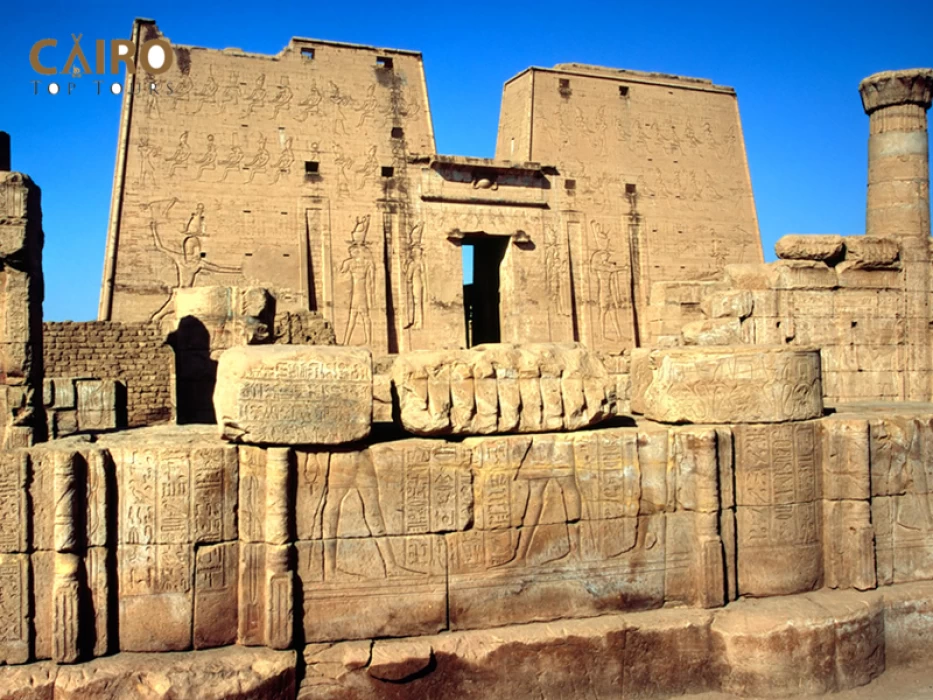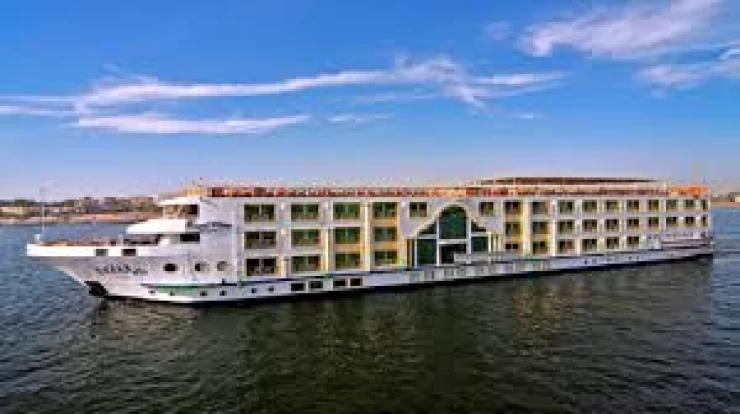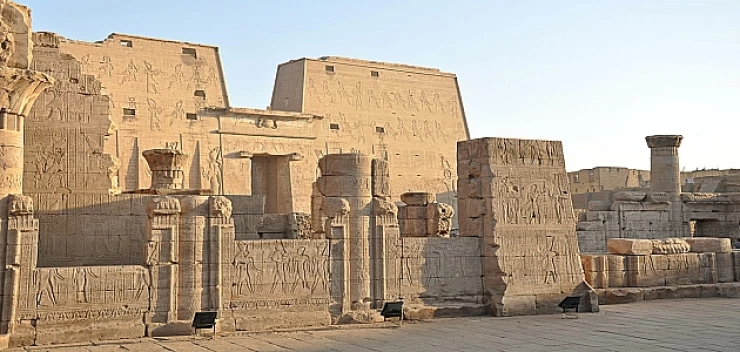
Kom Ombo Temple
Kom Ombo
Kom Ombo is a city in Upper Egypt, specifically in Aswan, southern Egypt. Historically, it is considered a city of great importance from an archaeological and touristic perspective. It has a history of important periods when it used to be the most important center of religion and culture.
The city proudly stands at a geographical point on the eastern bank of the Nile, thereby making it a strategic site in ancient Egyptian history. Kom Ombo is famous for its incredible temples and monuments of ancient glory that specialized the dignity of an ancient Egyptian civilization.
What is the meaning of Kom Ombo?
The legend of King Ombo, whose name is called Kom Ombo today, and the name of the city consist of two parts: the first part is Kom, which is known to mean that which rises above the ground from the level of the ground.
The second syllable is Ombo, which is the name of the king or the ruler of the valley at that time. King Ombo was one of the pharaohs' rulers, and he has a famous story written on the walls of the Kom Ombo temple, the only temple in that city.
He approached all the gods to save the son from dying young, but the inevitable event occurred: while the son was swimming in the Nile River, a large crocodile hunted him and killed him, so the father became very angry at his son and mourned, so he decided to kill all the crocodiles in the river and set up a large trap for crocodiles as he dug beside the course of the Nile River, a path that runs to the water, and he attacked the crocodiles as the water passed to the new course that diverted the course of the river, and the place of the temple became east of the Nile after its building was west of the Nile.
He used to take those crocodiles killed by his soldiers; he would embalm them and hang them on the walls of his temple until he looked at them and fulfilled his grief with them, and perhaps they would ease his sorrow for his deceased son.
Ancient History of Kom Ombo
Kom Ombo was part of the Pharaonic civilization and was famous for being a religious center for the worship of Sobek, the crocodile god, and Horus, the sky god.
In the Ptolemaic era, the city witnessed great prosperity as the Ptolemies built the famous Kom Ombo Temple, which is considered one of the most marvelous ancient Egyptian temples. There are restorative constructions that were added during the Roman eras.
The Kom Ombo Temple is one of the city's most prominent landmarks, a unique double temple specializing in the worship of two gods: Sobek and Horus.
The temple is a unique architectural design, with two identical sections, each of which is specialized for one of the two gods.
The temple includes many inscriptions and drawings that illustrate religious traditions and daily life in ancient times. The temple also includes a crocodile mummy, which shows how much the ancient Egyptians revered the god Sobek.
The temple includes many inscriptions and drawings that illustrate religious traditions and daily life in ancient times. The temple also includes a crocodile mummy, which shows how much the ancient Egyptians revered the god Sobek.
Economic and Religious Importance
Kom Ombo played an important role in trade and agriculture during ancient eras.
Its strategic position near the Nile allowed it to develop as a commercial center as trade caravans from Nubia to northern Egypt passed through it.
Agriculture was also a major component of the city's economy, as residents took advantage of the Nile's water to grow various crops.
Kom Ombo in the modern era
Kom Ombo still keeps its historical and cultural importance.
It is one of the most significant sources of income in the city, where tourists from all around the world flock to the Kom Ombo temple to witness the beauty of the surrounding area.
The city is making strides towards development in agriculture and industry, which is fostering better living standards for its citizens.
Crocodile Museum
Displaying mummified crocodiles, statues, and artifacts associated with Sobek, the Crocodile Museum is another attraction that makes the trip to Kom Ombo fall short of completion. Crocodiles were seen by the ancient Egyptians as another way of getting forgiveness for perhaps one of the greatest dangers posed in their lives by these reptiles inhabiting the Nile.
Things to do in Kom Ombo
Kom Ombo is still a famous place for tourists cruising the Nile between Aswan and Luxor. The wonderful position of this temple, overlooking the river, has some wonderful views at sunset. Morning or late afternoon is the best time to visit to avoid the heat of midday.
It alone stands high as a monumental testimony to all that was religiously affluent and architecturally beautiful in ancient Egypt. In turn, it gives a curtain-call view of the religious and practical truths of life.


















